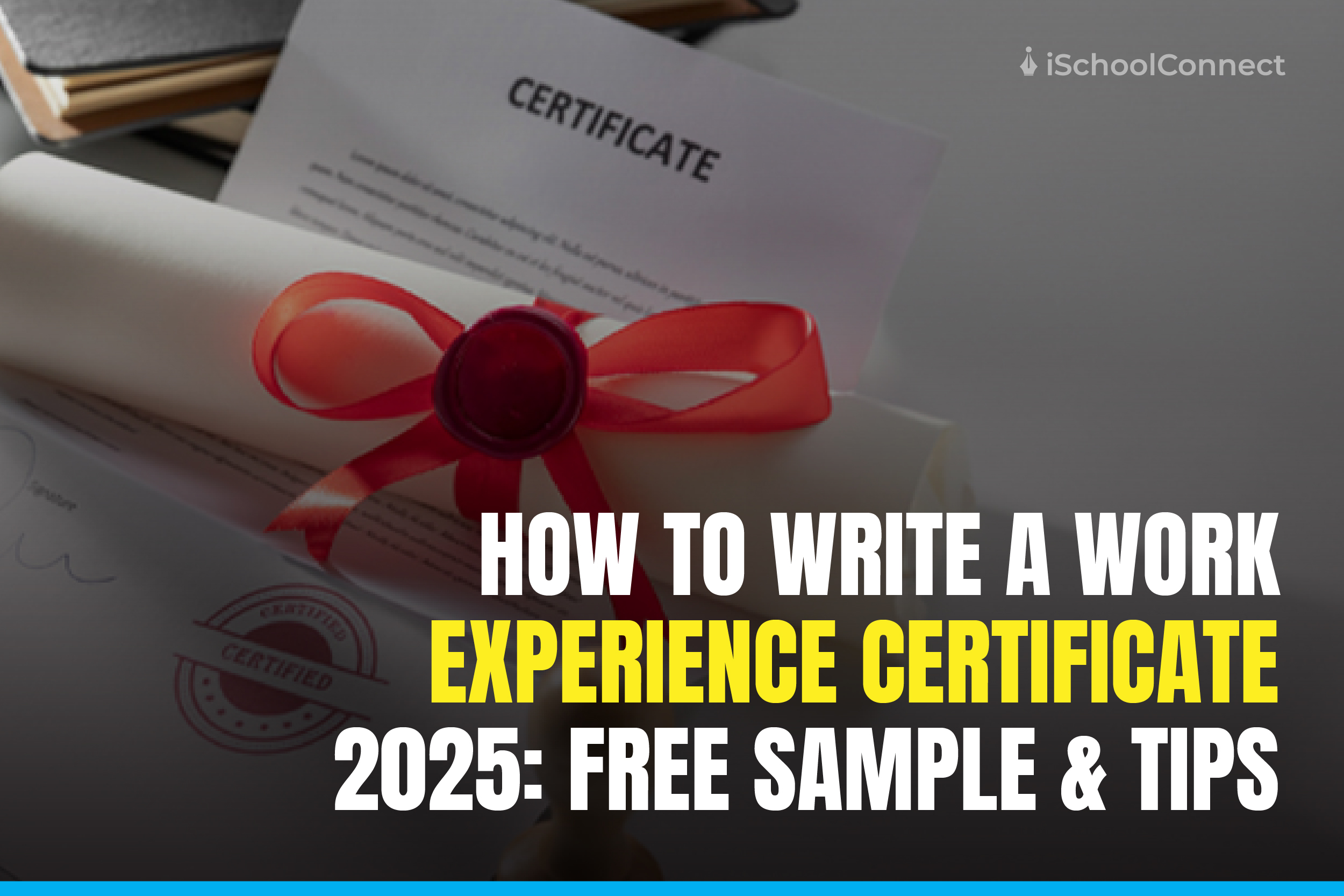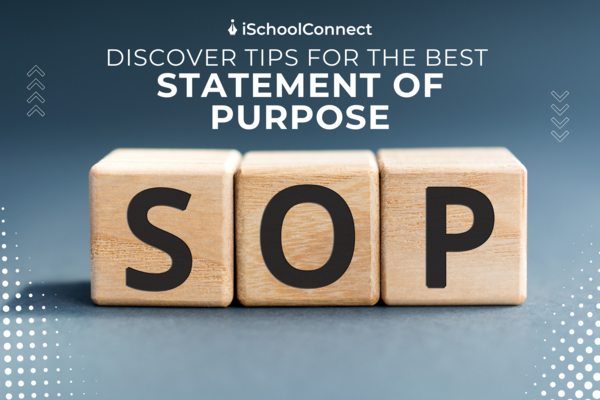Table of Contents
While applying for a job or a university for higher studies, a cover letter is a term that comes up more than often. Ever wondered why? Well, it is a quintessential document. Especially for freshers, who are just out of school or college. It helps you cover, in brief, the reasons why you should be admitted or hired. All in all, a cover letter serves as the cover page of your résumé.
What is a cover letter?
A long-form document that you send to the hiring managers or university admission committees is known as a cover letter. Generally, a one-pager, the letter describes your education, experience, and skills. It should compel the hiring manager or university admission committees into trusting your candidature.
Applicants usually include a cover letter with their résumé to catch the attention of an evaluator and provide details about their past projects that can benefit them.
So, a cover letter references the same information on your résumé but provides an insight into the things you want to highlight. In addition to this, the letter also helps you provide an understanding of your personality and writing style, which may not always be discernible from a résumé.
Purpose of the cover letter
Overall, the cover letter should provide additional background information about your application. Think of it as a segue to your résumé! The goal is to highlight your best qualifications, explain the things that your résumé doesn’t include, and add a bit of a personal story to your application. Even though some might consider it a relic of the past, writing a cover letter in 2022 shows your commitment and also exhibits that you took ‘the extra step’ on your part.
Why is it important?
Good question! How about we look at some stats to understand?
- Almost 53% of employers say that a résumé alone is not enough.
- About 50% of recruiters see the cover letter as something that makes them pay more attention to your application (remember ‘the extra step’ from above?).
- 45% of recruiters say that not having a cover letter can result in your résumé getting straight up rejected! So, no cover letter can mean you have ruined your chances with around half the employers out there. Not a good gamble, is it?
- Nearly 70% of employers spend less than 5 minutes reviewing an application. Therefore, capturing your evaluator’s attention for all of those 5 minutes (and maybe more) becomes so much more important.
- Additionally, you can also explain any employment or education gaps in your résumé as they make your résumé less attractive to recruiters.

Adding a cover letter remains a smart way to provide context to your application, convey your personality, or show your motivation. A good cover letter can spark the evaluator’s interest, and get them to read your résumé.
On the other hand, a bad cover letter might mean that your application is going directly to the paper shredder. Hence, it is essential to know how to write a convincing cover letter.
How to craft a good cover letter?
If you’re writing a cover letter for the first time, drafting it might seem pretty tough. But do you know what the best part is? You don’t need to be the best at writing, or extremely creative to craft a good one. All you need to do is to follow a tried-and-tested format, and you’re good to go.
Here’s what you need to do-
Step 1. Select the right template
Picking the right cover letter template makes all the difference. Like we mentioned earlier, the letter is essentially your first impression. Pick a well-formatted, visual template. Also, check out various options depending on whether you’re sending a cover letter for a job or a university application.
Step 2. Start with a good header
A good header on your cover letter is important. It usually consists of your contact information. This should include-
- Your name.
- Phone number.
- Email.
- Linkedin profile (if any).
- Social Media profiles (if any).
- Personal website/blog/portfolio.
The social media and personal website sections are specific to certain cases. For example, if you’re a writer, you might include your profile, if you’re a developer, you might include your GitHub profile, and so on and so forth.
If you have a personal website or a portfolio that would add value to your application, you can definitely mention it. Professional bloggers might want to link their blogs for reference.
Pro tips
- Do not mention your city of residence on your cover letter. Your résumé should have this piece of detail instead.
- Ensure your email address is presentable and modern. Stick to a professional format like [firstname] + [lastname} @ email provider.com. Pick Gmail or Outlook instead of old emails like rediffmail, yahoo, or AOL.
Step 3. Greet the reader
This is where your letter really starts. Start with a greeting, just like you would start a conversation. If you have addressed the letter to a hiring manager, do not go with the “Dear Sir or Madam” template.
You want to show your potential evaluator that you have done your research, and are passionate about the application. Research on who the person is, and address them properly. Linkedin is the usual place to research this.
If you still can’t seem to find the right person, you could use one of the following greetings-
- Dear [Department name] Hiring Manager.
- Dear Hiring Manager.
- To whomsoever it may concern.
- Dear [Department name] Team.
Step 4. Write an appealing intro
As we said above, first impressions matter. Recruiters or universities get thousands, if not tens of thousands of applications every year. Chances are, they’re not going to read every application end-to-end.
So it becomes crucial to grab their attention from the very first paragraph. This is why we suggest that you DO NOT make the first paragraph generic. Start off with your narrative and preferably highlight the top 2-3 achievements to really catch the reader’s attention!

Step 5. Keep them hooked with the body
Here’s where you explain why you are the best person for the job/university. Show off your professional skills and convince the reader that you are a better fit than the other applicants.
The body of the letter generally consists of 2 paragraphs. Make sure you structure it in a proper chronology. At the same time, ensure to include a few important aspects about you-
- Your achievements should be highlighted well and positioned as to how they make you an ideal fit.
- Ensure you do some research about the company/university you’re applying to. Evaluators love to know how you think you would fit in.
- DO NOT overuse buzzwords like “culture of innovation”, or “high growth” or “scalability” etc. Anybody can read through that fluff.
Step 6. Conclude with a call-to-action (CTA)
Finally, it’s time to wrap up with a conclusion. This is your punchline. This is where you can deliver the final oomph. In this final paragraph, you can do the following-
- If there’s anything left to say, or bring to a suitable close, do it here in the last paragraph.
- Finish with a Call to Action. This should make the reader take some action (like respond to you).
- Thank the reader for their time. Be courteous and polite.
- Use the correct formal close. “Best regards” or “Sincerely” work the best.
Step 7. Proofread and review
Before hitting that sweet SEND button, make sure to proofread your letter and check for grammar or spelling errors. Maybe if you need a second set of eyes to look over, a friend could review it for you. You can also use apps that proofread your content and even make suggestions to improve readability.
Summarizing the blog
Keep in mind that a cover letter is a supplementary piece to your résumé. It cannot be treated as a replacement for your résumé. This means that your letter should not repeat what is already on your résumé.
Is there anything we didn’t cover? Feel free to hit us up in the comments section or reach out to us with your doubts. We would love to help!
Liked this blog? Read more: How to write a powerful Statement of Purpose (SOP)?
FAQs
Question 1: What are the benefits of a good cover letter?
Answer: A good cover letter can help your candidature gain a strong base in the company or university you are aiming for. It helps the hiring manager or university admission committee understand your educational background, achievements, goals, and much more. In other words, a cover letter is a supporting document for your résumé.
Question 2: Other than our educational background and achievements, what else should we cover in the letter?
Answer: Basically, you should include all the information you want to highlight to the hiring manager or university admission committee. You can give out the link to your LinkedIn profile, a blog if you have one, or anything else that showcases your talent.
Question 3: Should we write the letter in brief or detail?
Answer: For the most part, the letter is the cover page of your résumé. While the aim is to make your candidature stand apart from the rest, you must ensure that the letter isn’t lengthy.






